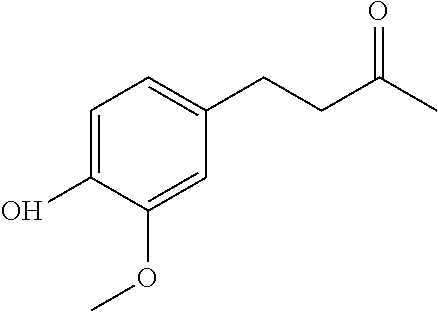Oral care compositions
a technology of oral cavity and composition, applied in the field of oral cavity composition, can solve the problems of limited popularity, loss of therapeutic properties, and inability to give rise to dental caries and periodontal problems, and achieve the effect of enhancing stannous stability and improving protection from demineralization
- Summary
- Abstract
- Description
- Claims
- Application Information
AI Technical Summary
Benefits of technology
Problems solved by technology
Method used
Image
Examples
example 1
[0154]To measure metal ion solubility, slurries of each test dentifrice in deionized water are prepared at a 10% w / v dilution. The slurries are stirred vigorously for 30 minutes, and then filtered to remove insoluble material. The recovered filtrates are analyzed for soluble stannous ion, soluble zinc ion, and soluble fluoride ion by atomic absorption spectroscopy, and the results are reported on Table 3, below. Results for stannous (Sn) and zinc (Zn) are presented as a proportion of the respective ion present in the neat formulation (%). Results for fluoride (F) are presented as ppm. pH is measured as the 10% w / v aqueous suspension.
[0155]The temperature was adjusted to either 25° C. or 40° C., as indicated on Table 2. The samples were stored at the desired constant temperature for one of three durations (4 weeks, 8 weeks and 13 weeks), and the results are reported on Table 2.
[0156]
TABLE 2InitialInitialInitial% Sol.Aged %Initial% Sol.Initial FAged FAging Time% SnSnSol. Sn% ZnZnAged ...
example 2
[0158]Samples are prepared by first diluting dentifrice in phosphate buffered solution at the ratio indicated to produce a slurry and then inoculating the slurry with saliva bacteria by adding together the slurry and saliva at 1:1 volumetric ratio. The control contains no dentifrice and is prepared by combining phosphate buffered saline and saliva in 1:1 volumetric ratio. Antibacterial efficacy was measured using an ATP bioluminescence assay with saliva-derived bacteria (BacTiter-Glo Microbial Cell Viability Assay, from Promega). Assays were performed at both a 1:4 dilution and a 1:8 dilution of the dentifrice in phosphate-buffered saline (PBS). Compositions A with zingerone and. Comparative Composition B with zingerone excluded based upon the formulation described above. The luminescence of samples were measured on a PerkinElmer 2104 EnVision Multilabel Reader. Luminescence is measured in units of cps (counts per second). The results are shown in Table 4 below.
[0159]
TABLE 4ATP Biol...
PUM
| Property | Measurement | Unit |
|---|---|---|
| pH | aaaaa | aaaaa |
| pH | aaaaa | aaaaa |
| pH | aaaaa | aaaaa |
Abstract
Description
Claims
Application Information
 Login to View More
Login to View More - R&D
- Intellectual Property
- Life Sciences
- Materials
- Tech Scout
- Unparalleled Data Quality
- Higher Quality Content
- 60% Fewer Hallucinations
Browse by: Latest US Patents, China's latest patents, Technical Efficacy Thesaurus, Application Domain, Technology Topic, Popular Technical Reports.
© 2025 PatSnap. All rights reserved.Legal|Privacy policy|Modern Slavery Act Transparency Statement|Sitemap|About US| Contact US: help@patsnap.com

